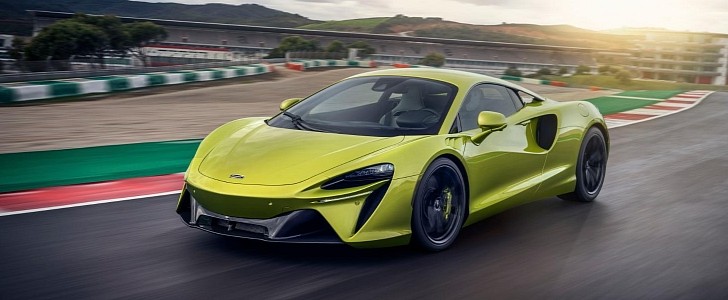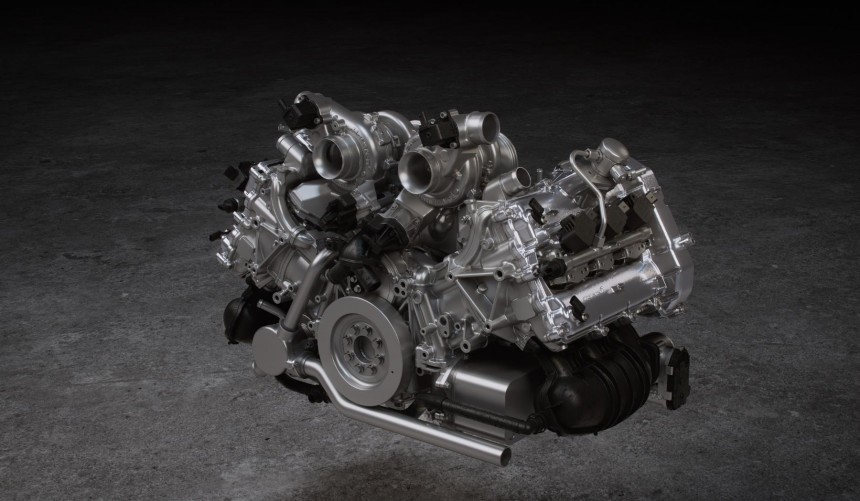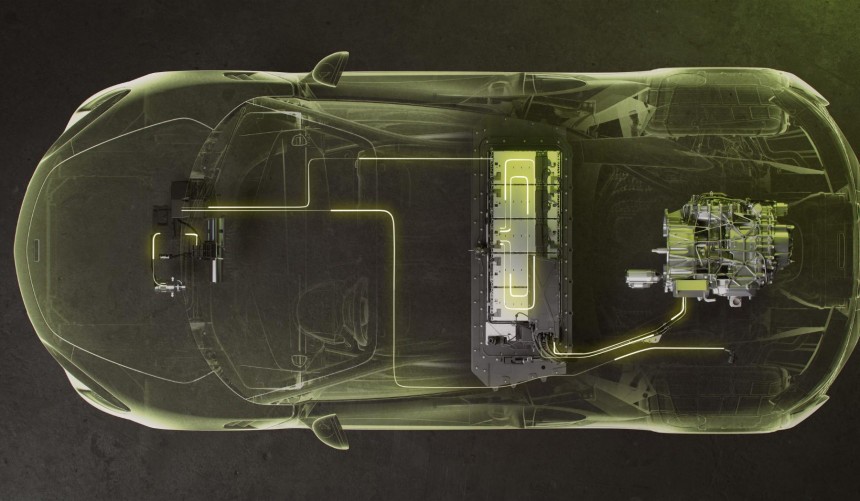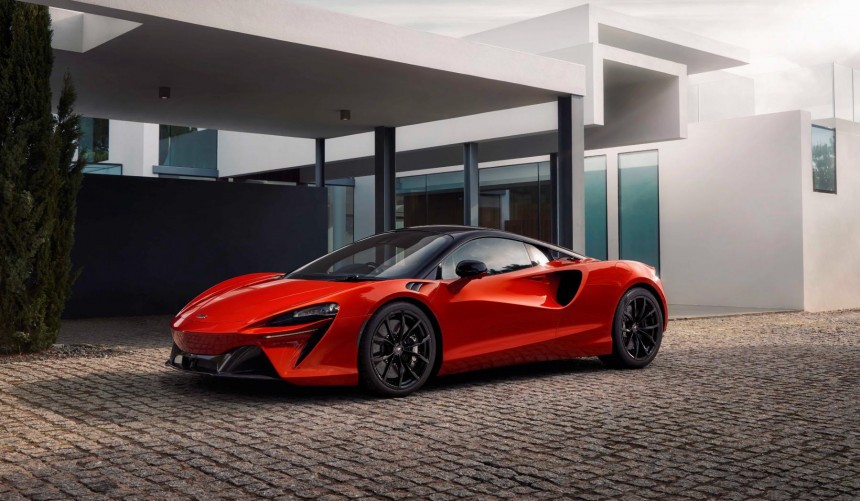The British carmaker has recently revealed its first V6-powered hybrid supercar, the stunning Artura. It uses an innovative plug-in hybrid powertrain with a newly developed V6 aided by a lightweight electric motor at its heart.
Almost twenty years after it released the legendary F1, McLaren has revealed its latest creation. Gone are the days of the BMW-sourced naturally aspirated V12. Now, McLaren has given the Artura the company’s first V6 PHEV powertrain.
All-new from the ground up, the Artura is built on the compact McLaren Carbon Lightweight Architecture (MCLA), specifically developed for the next generation of McLaren hybrid supercars.
Engineers chose to drop the V8 in favor of a 3.0-liter twin-turbocharged V6 which delivers 577 hp and 431 lb-ft (585 Nm) of torque.
Codenamed M630, the aluminum unit is the first V6 used in a production McLaren and, at 353 lbs (160 kg), it weighs 110 lbs (50 kg) less than the eight-cylinder engine used in previous Sports Series models.
Apart from performance, one of the carmaker’s main goals was to reduce emissions, so this ICE is designed to use a Gasoline Particle Filter.
Its 120-degree configuration allowed engineers to mount the turbochargers inside the "hot vee," resulting in a very compact powerplant. This layout also boosts performance by minimizing any pressure losses through the exhaust system and allows for a stiffer crankshaft to be fitted.
The V6 is aided by a compact yet power-dense axial flux electric motor located within the transmission housing. It only weighs 33 lbs (15.4 kg) including the gearbox, but it delivers an extra 94 hp and 166 lb-ft (225 Nm) of torque. McLaren states that this motor has a 33% greater power density per kg than the unit used in the track-focused P1.
By packaging the electric motor in line with the V6 and gearbox, the power and torque are transferred directly to the main transmission shaft, improving response.
Torque is delivered to the rear wheels via a new eight-speed dual-clutch transmission developed specifically for the Artura. Despite having one more gear than existing McLaren gearboxes, the lightweight gear cluster is 40 mm (1.6 inches) shorter in length.
The Artura’s electric motor is powered by a 7.4kWh battery pack which includes five lithium-ion modules. Weighing 194 lbs (88 kg), the pack is reinforced with a carbon fiber panel and bolted onto the monocoque's rear base, improving chassis rigidity, weight distribution, and crash protection.
The battery offers 18.6 miles (30 km) of emission-free, pure EV range and, according to the manufacturer, can be charged to an 80% level in just 2.5 hours using a standard EVSE cable.
All this new tech means that the Artura has a total power output of 671 hp and 530 lb-ft (720 Nm) of torque. That is enough to propel the new supercar from a standstill to 62 mph (100 kph) in just 3 seconds, to 124 mph (200 kph) in 8.3 seconds, and 186 mph (300 kph) in 21.5 seconds. The top speed is electronically limited at 205 mph (330 kph).
McLaren’s first V6-powered road car is available to order now, with prices starting at around $262,000 for the standard model. According to the carmaker, every Artura will be delivered with a five-year vehicle warranty, a six-year battery warranty, and a 10-year body warranty.
All-new from the ground up, the Artura is built on the compact McLaren Carbon Lightweight Architecture (MCLA), specifically developed for the next generation of McLaren hybrid supercars.
Engineers chose to drop the V8 in favor of a 3.0-liter twin-turbocharged V6 which delivers 577 hp and 431 lb-ft (585 Nm) of torque.
Apart from performance, one of the carmaker’s main goals was to reduce emissions, so this ICE is designed to use a Gasoline Particle Filter.
Its 120-degree configuration allowed engineers to mount the turbochargers inside the "hot vee," resulting in a very compact powerplant. This layout also boosts performance by minimizing any pressure losses through the exhaust system and allows for a stiffer crankshaft to be fitted.
By packaging the electric motor in line with the V6 and gearbox, the power and torque are transferred directly to the main transmission shaft, improving response.
Torque is delivered to the rear wheels via a new eight-speed dual-clutch transmission developed specifically for the Artura. Despite having one more gear than existing McLaren gearboxes, the lightweight gear cluster is 40 mm (1.6 inches) shorter in length.
The battery offers 18.6 miles (30 km) of emission-free, pure EV range and, according to the manufacturer, can be charged to an 80% level in just 2.5 hours using a standard EVSE cable.
All this new tech means that the Artura has a total power output of 671 hp and 530 lb-ft (720 Nm) of torque. That is enough to propel the new supercar from a standstill to 62 mph (100 kph) in just 3 seconds, to 124 mph (200 kph) in 8.3 seconds, and 186 mph (300 kph) in 21.5 seconds. The top speed is electronically limited at 205 mph (330 kph).
McLaren’s first V6-powered road car is available to order now, with prices starting at around $262,000 for the standard model. According to the carmaker, every Artura will be delivered with a five-year vehicle warranty, a six-year battery warranty, and a 10-year body warranty.






















